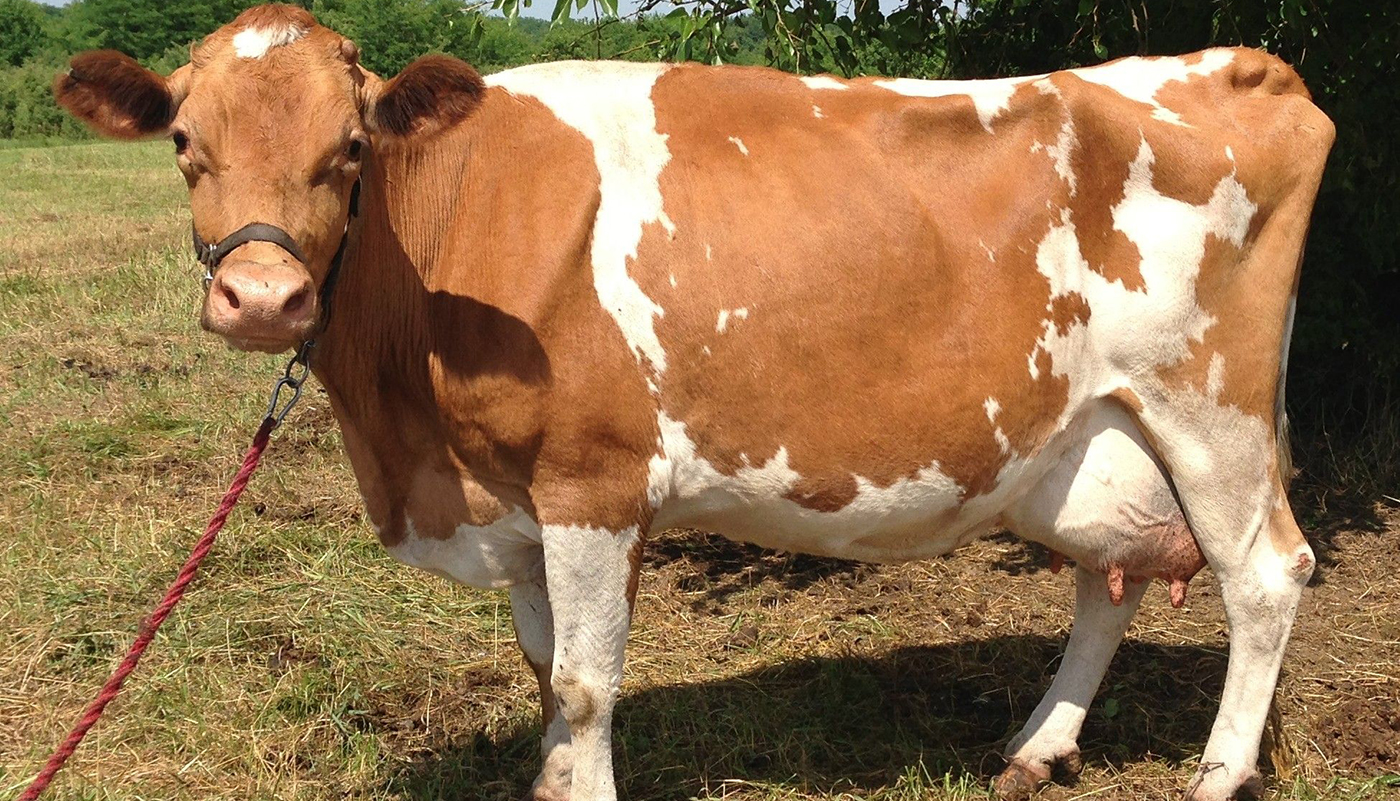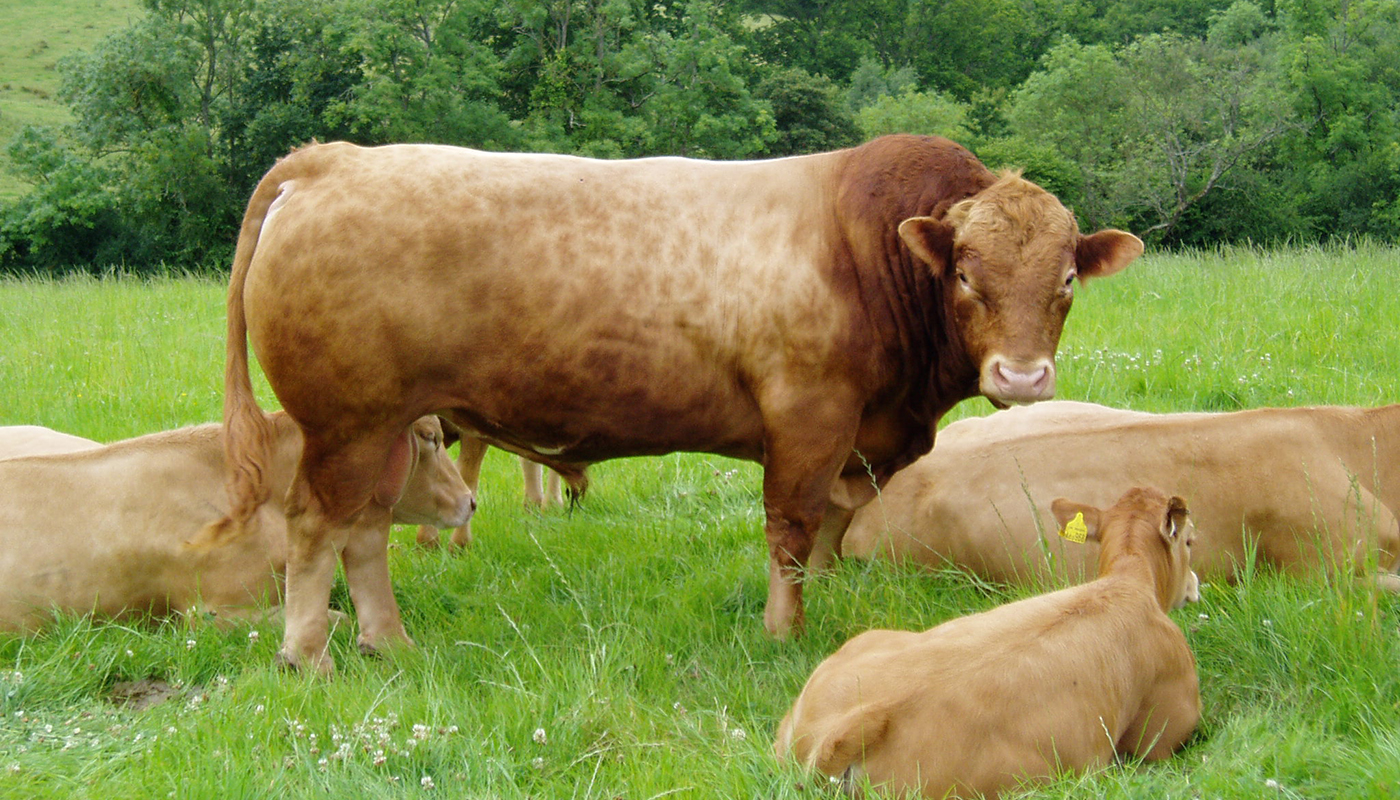
The American Milking Devon was once one of the most prominent cattle breeds in America. Their deep glossy red coats used to be a prevalent site grazing upon various cattle farms.
Today they are one of the rarest cattle breeds in the world being listed as Critical by the American Livestock Conservancy.
Despite their name, they were once an excellent multipurpose breed used for milk, meat and as draft cattle to pull plows and carts.
AMERICAN MILKING DEVON BREED OF CATTLE QUICK PROFILE OVERVIEW |
|
|---|---|
| The American Milking Devon is a dark rich red and is quite a rare sight on cattle ranches these days | |
| Country of Origin: | United States of America |
| Other Names: | None |
| Main Purpose: | Dairy, meat, and draft |
| You may Also Like: | 35 Best Cattle Breeds for Milk – Dairy Cattle |
| You may Also Like: | 47 Best Cattle Breeds for Meat – Beef Cattle |
| Can be used for | Breed, Meat, Milk and Draft |
| Ideal Climate: | Heat, Cold, Most Climates |
| Conservation Status: |
Listed by the *ALC Status/Rarity: Listed as Critical |
| Health Issues? | No known health issues |
| Good Starter Cattle? | Novice to intermediate Cattle farmer/keeper level |
| Cattle Associations: | American Milking Devon Cattle Association |
| Cattle Clubs: | Please refer to American Milking Devon Cattle Association for more information |
| Where to buy them? | Please refer to American Milking Devon Cattle Association for more information |
| Child Friendly? | Livestock should not be left unattended around unsupervised children |
| General Information: | The American Milking Devon is said to have been one of the inspirations for the formation of the American Livestock Conservancy. There is documentation to indicate that the American Milking Devon should be the centerpiece breed of the American Livestock Conservancy. It was during preparations for the American Bicentennial Celebration in the mid-170’s that Plimoth Plantation along with Old Sturbridge Village decided to make their exhibition more authentic. They wanted to do this by exhibiting breeds that were prominent during the era they were celebrating. They once very popular breed the American Milking Devon turned out to be quite a search. It was then that they realized just how rare the breed had become. It was through this that the idea and eventually the inception of the conservancy were formed. The American Milking Devon was prized as top oxen that would draw wagons and pull plows on the lands due to its sheer strength. |
| Note: *ALC stands for American Livestock Conservancy | |
PHYSICAL CHARACTERISTICS |
||||||||||||||||||||||||||||||||
|---|---|---|---|---|---|---|---|---|---|---|---|---|---|---|---|---|---|---|---|---|---|---|---|---|---|---|---|---|---|---|---|---|
| They are a sturdy breed with a powerful compact body and legs. They have strong boned facial features with a wide forehead. They are very strong, active and alert. The American Milking Devon are excellent foragers that do well without supplemental feed. Their color is usually solid with no markings other than a lighter tail tip that is usually a cream color. | ||||||||||||||||||||||||||||||||
| Size: | Medium | |||||||||||||||||||||||||||||||
|
||||||||||||||||||||||||||||||||
COW BREEDING & MILKING INFORMATION |
|
|---|---|
| Most Cattle produce milk but not all of them are used in the dairy Cattle capacity for their milk. Cows only calve once a year and should have 12 to 14-month inter-calving cycle. The American Milking Devon’s milk has been likened to that of Jersey’s milk although they do not produce as much milk as the Jersey cow does. Their milk has a high butterfat content of around 4 to 6% which makes it ideal for cheese. They are excellent mothers and as their calves are quite small, they have minimal birthing problems. They should not be milked for the first few days after the calf is born to ensure that the calf gets the benefit of the mother’s milk and the colostrum it needs. | |
| Breeding Period/cycle: | Usually lasts 6 to 24 hours Most ave. 12 to 16 hours Cows usually come on heat every 21 days. |
| Estrous cycle: | Ave. 17 days to 24 days Heifer – usually ave. 20 days Cows – usually ave. 21 days |
| Gestation Period: | Usually, around 279 to 287 days but most gestation is 283 days. Cows that are carrying bull calf’s their gestation period is usually a little longer than cows that are carrying heifer calves. |
| No. Calves/Litter: | 1 calf at a time. Cows rarely have twins or triplets, but it can happen |
| Lactation Period: | Cows lactation period can last for up to about 10 months (305) days. |
| Milking From: | 1 to 6 weeks after Calving |
| Drying off Period: | The cow should have a 12 to 14-month inter-calving cycle. Drying off period for around 60 days before she can calve again. |
| Milk Quality: | Excellent, Quantity: 11 liters (4-6% Butterfat content) per day |
| Milk Ideal for: | Calves, drinking, cheeses, etc. |
| You may Also Like: | 35 Best Cattle Breeds for Milk – Dairy Cattle |
CATTLE MEAT PRODUCTION INFORMATION |
||||||||
|---|---|---|---|---|---|---|---|---|
| They are not really bred as meat cattle and with their rarity these days they are seldom if ever used for their meat. However, their meat is of a very high quality and the calves mature and fatten early to produce an excellent beef carcass. Their meat is known to be well marbled which makes for tender succulent meat. The common dress-out percentage for these cattle is around 60% and they are well known for their evenly disturbed flesh throughout their body which makes their meat quality basically the same for any cut throughout their body. | ||||||||
| Meat Production? | No – they are critically endangered, Quality: Excellent | |||||||
|
||||||||
| You may Also Like: | 47 Best Cattle Breeds for Meat – Beef Cattle | |||||||
CATTLE SKIN PRODUCTION INFORMATION |
||||||||
|---|---|---|---|---|---|---|---|---|
| Most meat Cattle will have a skin by-product, and these are usually used in some form or just as a hide. The American Milking Devon is one of the rarest cattle breeds in the world as such their skin is not really used for leather production. | ||||||||
| Skin Production? | N/A | |||||||
| Skin is used to Produce: | Calf/cow skin leather products such as shoes, car seats, fine leather coats, gloves, handbags, belts, furniture, rugs, etc. | |||||||
|
||||||||
HISTORY
The Devon cattle breed were brought to New England in America by the Pilgrims from England around 1623. Devon cattle originated from Devonshire in England, the southwestern peninsula to be exact.
The Devon breed was found being sold around the various English departure ports. They were the obvious choice for immigrants to America. Their strong sturdy bodies were ideal oxen for the pulling of wagons and would be a great asset for the plowing of land. They could also provide milk, food, and skins.
During the 1600s the breed was well established in New England and during the 1700s to 1800s spread as far as Florida. As the Devon cattle were the favorite oxen of choice for ox-wagons the breed was also spread west for the Oregon Trail.
The first recorded herd books for the Devon cattle date back to around 1855. But by the late 1800s, the Devon cattle were slowly being replaced by the Shorthorn cattle breed. The Shorthorn proved to be a better multi-purpose breed of cattle than the Devon were.
However, the breed remained prevalent in New England where it was prized for its hardiness with the ability to thrive under rugged extreme conditions. Something that the Shorthorn cattle breed fell short at.
There was a lot of pressure placed on the Devon breed to become more of a beef breed and a new population of the Devon breed branched out. This breed became known as the Beef Devon. As a small group of Devon breeders did not agree with this, they branched off forming a separate organization in which the breeds draft and dairy traits were preserved. This organization however disbanded and the genetic stock left was saved and as such a new organization was formed. The American Milking Devon Association was founded in 1978 and was founded to preserve the heritage American Milking Devon breed thus saving the breed from extinction.
Video
USEFUL LINKS
- Purebred Dairy Cattle Association
- American Dairy Association
- National Association of Animal Breeders
- American Dairy Science Association
- United States Cattlemen’s Association
- National Cattlemen’s Beef Association
- American National Cattlewomen
- Beef Cattle Breed Associations
- National Cattlemen’s Beef Association
- Fur Commission USA
- North American Meat Institute
- American Livestock Conservancy
- Animal Shelter (ASPCA)
- American Veterinary Medical Association
- American Animal Welfare Society
- American Animal Control
- American Society of Animal Science
- United States Department of Agriculture
 Droughtmaster Cattle Breed – Everything You Need to Know
Droughtmaster Cattle Breed – Everything You Need to Know Guernsey Cattle Breed – Everything You Need to Know
Guernsey Cattle Breed – Everything You Need to Know Sahiwal Cattle Breed – Everything You Need to Know
Sahiwal Cattle Breed – Everything You Need to Know Senepol Cattle Breed – Everything You Need to Know
Senepol Cattle Breed – Everything You Need to Know Afrikaner Cattle Breed – Everything You Need to Know
Afrikaner Cattle Breed – Everything You Need to Know Boran Cattle Breed – Everything You Need to Know
Boran Cattle Breed – Everything You Need to Know Aubrac Cattle Breed – Everything You Need to Know
Aubrac Cattle Breed – Everything You Need to Know Gelbvieh Cattle Breed – Everything You Need to Know
Gelbvieh Cattle Breed – Everything You Need to Know Ayrshire Cattle Breed – Everything You Need to Know
Ayrshire Cattle Breed – Everything You Need to Know English Longhorn Cattle Breed – Everything You Need to Know
English Longhorn Cattle Breed – Everything You Need to Know Beefalo Cattle Breed – Everything You Need to Know
Beefalo Cattle Breed – Everything You Need to Know Heck Cattle Breed – Everything You Need to Know
Heck Cattle Breed – Everything You Need to Know